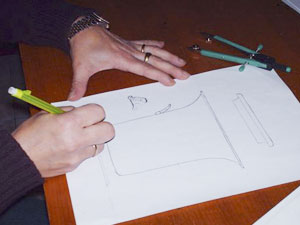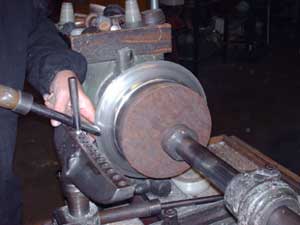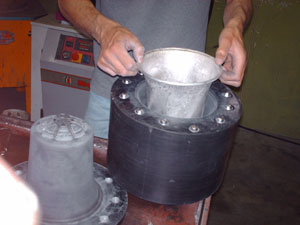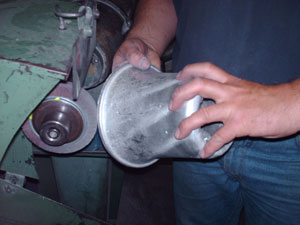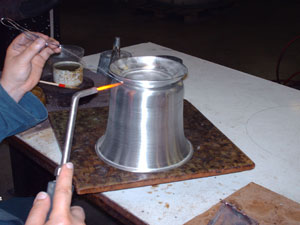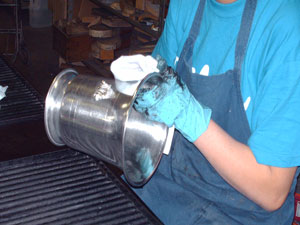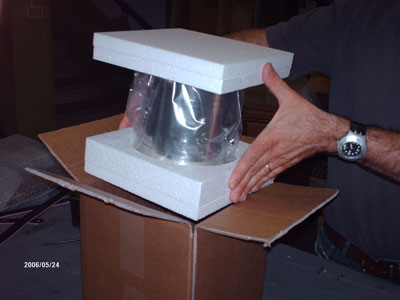Preparing the mould
The mould can be made of wood for the items created by turning; we prefer to use hard material with few veins not in relief like walnut, pear or cherry tree wood.
For the items produced by fusion, the mould, once in plaster, is now of rubber, because it can be used for several castings and not only one as for plaster. The artistic result is the same. The raw rubber is shaped by hand and then vulcanised.
Patination
The final touch is patination, the stage in which the object will take the right tone according to the final customer’s taste.
This operation is carried out entirely by hand smearing a black patina, containing several kinds of waxes and lampblack, all over the well polished object; then it is let to dry for a short time and finally, with a soft cloth, the exceeding patina is taken off, leaving it in the engravings and chiselling of the item.



